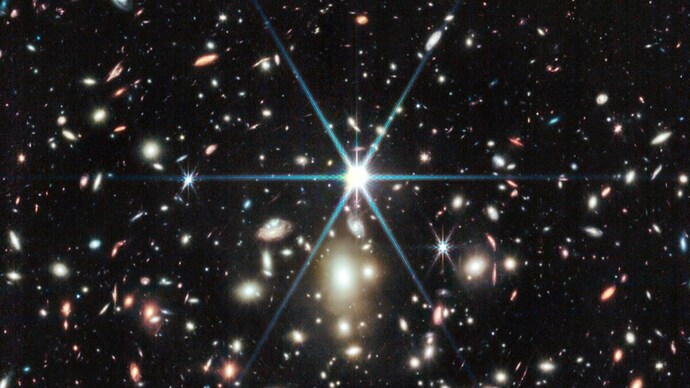
Webb Telescope looks at most distant star ever detected, twice as hot as Sun
Earendel, a massive B-type star, is more than twice as hot as our sun and about a million times more luminous. The star's detection was made possible due to gravitational lensing.

In Short
- This celestial body is located in the Sunrise Arc galaxy
- Earendel, a massive B-type star, is more than twice as hot as our sun
- Earendel appears as a single point of light
Nasa's James Webb Space Telescope (JWST) has observed the most distant star ever detected, named Earendel.
This celestial body, located in the Sunrise Arc galaxy, was first spotted by the Hubble Space Telescope and is believed to have existed within the first billion years following the Big Bang.
Earendel, a massive B-type star, is more than twice as hot as our sun and about a million times more luminous. The star's detection was made possible due to gravitational lensing, a phenomenon where the gravity of a massive foreground object, in this case, the galaxy cluster WHL0137-08, acts like a lens, bending and brightening light from a more distant body.
The JWST's Near-Infrared Camera (NIRCam) instrument revealed Earendel appears as a single point of light, indicating that it is extremely small and magnified by a factor of at least 4,000. This makes Earendel the most distant star ever detected, observed just 1 billion years after the Big Bang.
Interestingly, astronomers believe they have detected hints of a cooler, redder companion star to Earendel. This potential companion star's light has been stretched by the expansion of the universe to wavelengths longer than Hubble’s instruments can detect, making it only visible with the JWST.
In addition to Earendel, the JWST's NIRCam also revealed other notable features in the Sunrise Arc galaxy, including young star-forming regions and older established star clusters.
One such region, estimated to be less than 5 million years old, appears elongated due to the distortion of the gravitational lens. On either side of Earendel, smaller dots represent two images of an older, more established star cluster, estimated to be at least 10 million years old.
These discoveries have opened up new possibilities for scientists studying the early universe, offering hope for the eventual detection of one of the very first generation of stars, composed only of hydrogen and helium, the raw ingredients of the universe created in the Big Bang.
JWST continues to probe the mysterious structures and origins of our universe, solving mysteries in our solar system and looking beyond to distant worlds around other stars.

